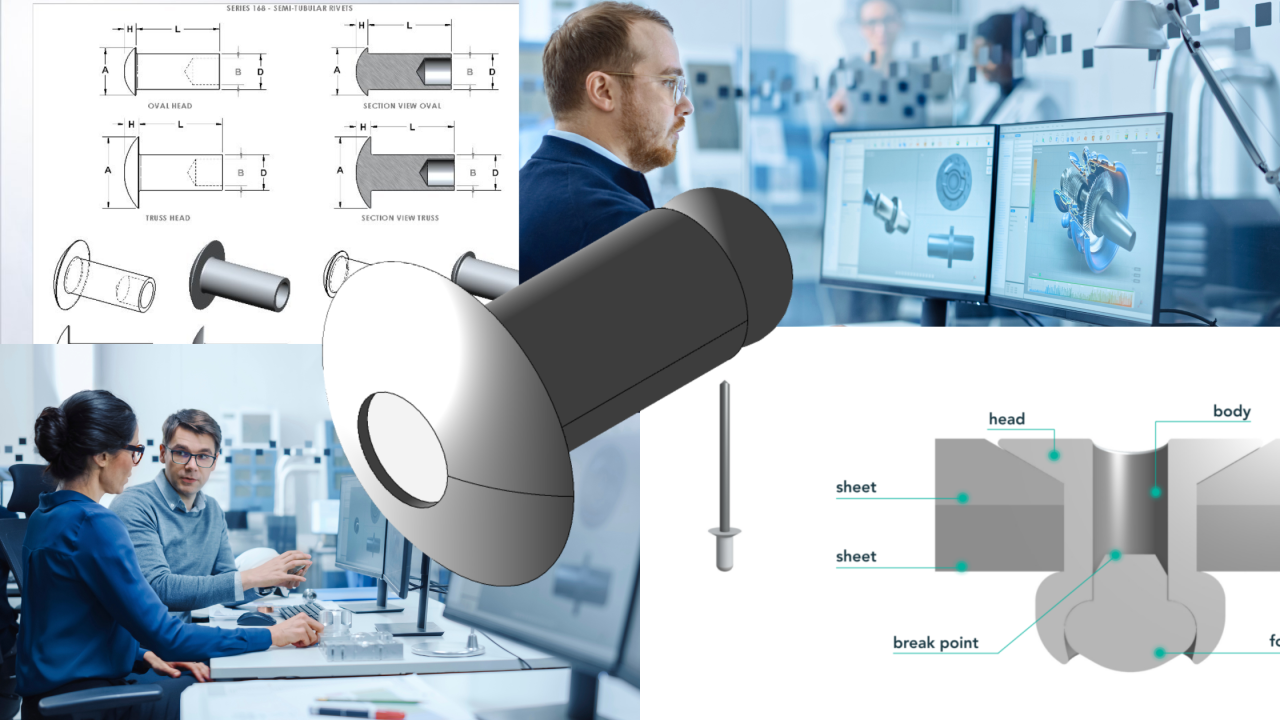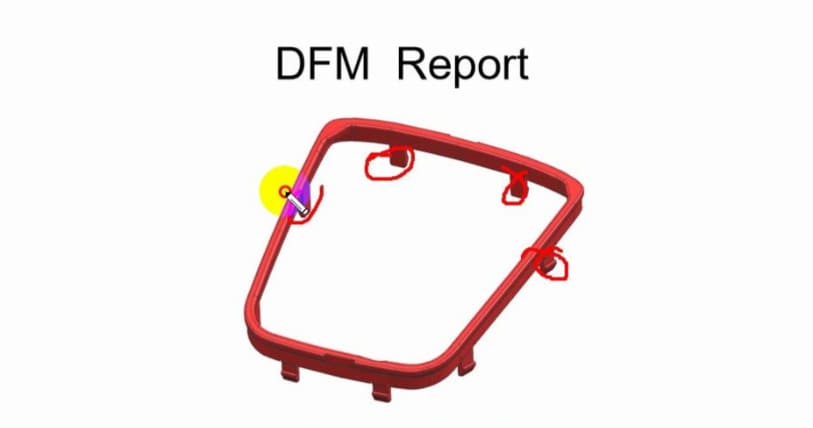DFM Report Explained: How AI Makes Design More Manufacturable and Cost-Efficient

In industrial manufacturing, every part must pass a critical stage before production — Design for Manufacturability (DFM) analysis.
For engineers and R&D professionals, a DFM report isn’t a mere formality — it determines whether the product can be manufactured efficiently, cost-effectively, and reliably.
This article takes you deep into the core of the DFM report and explores how AI is reshaping the entire DFM process, turning it from a manual evaluation into a real-time intelligent system.
01 | What Is a DFM Report?

A DFM (Design for Manufacturability) report is traditionally prepared by experienced engineers after reviewing 2D or 3D drawings. It covers several key aspects:
- Structural feasibility: Detects thick/thin walls, undercuts, and machining blind spots.
- Process suitability: Determines whether the part is best suited for CNC machining, injection molding, sheet metal fabrication, or 3D printing.
- Material compatibility: Checks if the selected material meets requirements such as strength, temperature resistance, or corrosion protection.
- Assembly and finishing: Reviews design details for screw holes, clips, surface coating, painting, or electroplating.
However, traditional DFM processes are slow, subjective, and time-consuming. Feedback may take days or even weeks, causing teams to miss the optimal design iteration window.
02 | How AI Performs DFM Analysis
At Leanplans, we have developed an AI multi-agent DFM system powered by an industrial knowledge model that shifts DFM from experience-driven to data-driven analysis.
The AI-based DFM process includes several intelligent steps:
1. Automatic Drawing Analysis
After uploading 2D or 3D files, the AI automatically identifies part dimensions, geometric features, and potential weak points.
2. Process Matching and Comparison
AI compares multiple manufacturing methods and recommends the most suitable one based on part geometry, volume, and tolerance requirements.
- CNC machining: High precision but higher cost.
- Injection molding: Best for mass production, longer mold cycle.
- 3D printing: Fast prototyping, but material options limited.
3. Material Optimization
By combining mechanical simulation and material databases, AI recommends the best material for each scenario:
- High-strength parts → PEEK + metal insert
- Low-temperature conditions → TPU or polyurethane seals
- High wear resistance → POM or PA66
4. Structural & Cost Optimization
AI automatically detects and corrects design issues:
- Over-thick walls → Suggest thinning to prevent shrinkage
- Sharp corners → Add fillets to avoid cracking
- Complex holes → Propose modular or split designs
It also estimates material utilization and machining time, providing a cost-optimized solution.
5. Interactive DFM Report
The report is presented in an interactive visual format, where every issue and suggestion is clearly marked on the 3D model.
What once took 3–5 days can now be completed within minutes — dramatically accelerating design verification.
03 | Integrating AI DFM with Cloud Manufacturing
Design optimization alone is not enough — true impact comes when it’s seamlessly linked to production capability.
After AI DFM evaluation, Leanplans Cloud Factory Network enables immediate manufacturing execution:
- Rapid prototyping: AI-optimized designs go straight to CNC or 3D printing, with samples ready in as fast as 48 hours.
- Small-batch validation: Conduct pilot production to validate manufacturability before scaling.
- Mass production: Once the design is proven, shift to injection molding or die casting for consistency and cost advantage.
This AI analysis + Cloud Manufacturing workflow forms a closed loop from design → evaluation → prototype → production.
04 | Why AI DFM Matters for Research and Product Innovation
For universities, research institutes, and innovative startups, AI DFM delivers significant value:
- Reduces trial-and-error: Eliminates rework caused by unmanufacturable designs.
- Accelerates development: Enables fast iteration for test fixtures and experimental components.
- Optimizes budgets: Helps teams find the balance between performance and cost.
- Facilitates commercialization: Bridges the gap between research results and industrial application.
05 | The Future of DFM: Toward Intelligent Design
AI DFM is evolving beyond a tool — it’s becoming a real-time design companion for engineers:
- Integrated with CAD: Enables design-as-you-verify workflows.
- Predicts production issues: Moving toward zero-defect manufacturing.
- Connected with supply chain data: Achieves global optimization across cost, lead time, and process selection.
In this new era, AI DFM becomes an engineer’s second set of eyes — making every design faster, smarter, and ready for production.
FAQ
- Is DFM applicable to both plastic and metal CNC parts?
Yes. The DFM report supports both plastic and metal components. It considers each material’s strength, thermal stability, and machinability to ensure real-world feasibility. - Does the DFM report recommend materials?
Absolutely. It provides material recommendations based on performance needs, cost, and process compatibility — helping engineers find the best trade-off. - How does DFM influence redesign?
DFM reports identify risks like thin walls, deep holes, or complex geometries early in the design stage. Engineers can make quick revisions to avoid costly redesigns later. - Can DFM handle complex geometries?
Yes. AI DFM analyzes tool accessibility, machining sequence, and clamping strategy, suggesting simplifications that improve manufacturability and lower costs. - Does DFM reduce CNC machining lead time?
Yes. By optimizing geometry and eliminating unnecessary features, DFM reports significantly speed up machining and delivery, accelerating product iteration.
Conclusion
A DFM report is no longer just a checklist of design errors — it’s the first passport from design to production. By combining AI-driven analysis with cloud manufacturing, Leanplans is enabling engineers and researchers to turn ideas into real products faster, smarter, and more economically.
Turn Your Designs into Intelligent Products
Discover how AI-driven DFM and cloud manufacturing can make your product development faster, smarter, and more cost-efficient. Upload your model to see how our AI identifies manufacturability issues, optimizes material usage, and predicts production cost — all within seconds.
Get Started:
Try AI DFM Online → Instant analysis & cost simulation
Talk to AI Engineer → Personalized solution for your team via WhatsApp for immediate assistance

